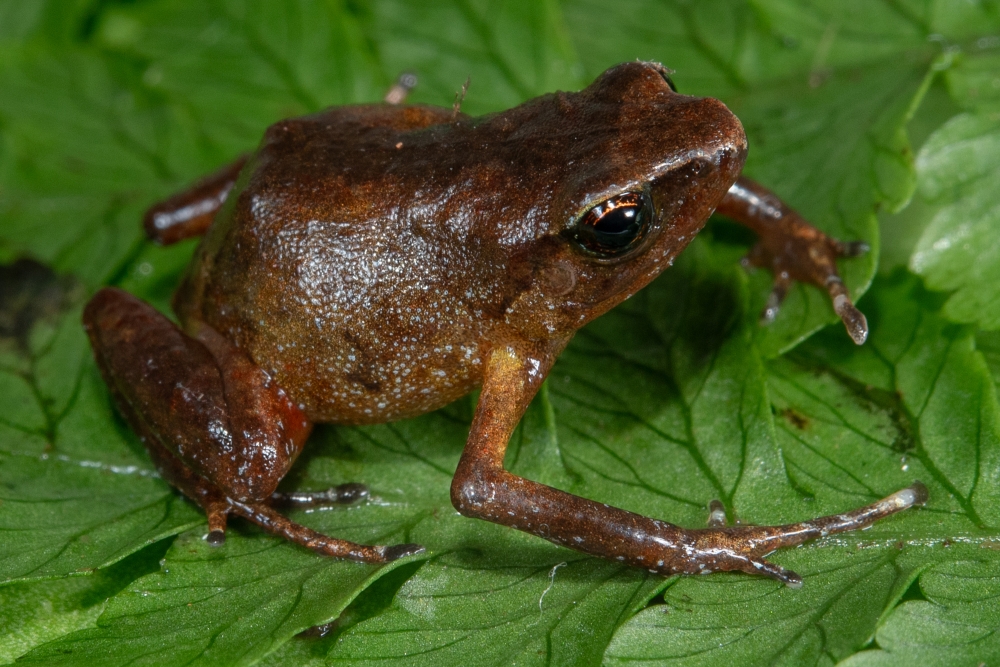In a groundbreaking discovery, scientists have identified a previously unknown frog species in Rwanda, named Arthroleptis nyungwensis, or the Nyungwe squeaker frog. The finding comes from a comprehensive study conducted by Maximilian Dehling, a researcher from the University of Koblenz, Rhineland-Palatinate, Germany, spanning the years 2010 to 2018.
Read More: Investing in African Green Solutions
The research reveals that this new frog species is “locally endemic” to the Nyungwe and Cyamudongo forests, exclusively inhabiting the leaf litter of montane forests at elevations ranging from approximately 5,900 feet to 7,200 feet.
Distinguished by a distinctive combination of morphological features, the Nyungwe squeaker frog measures a mere 0.6 inches in length, featuring a slender body, long legs, and roughly textured skin. The coloration varies, generally presenting a brown-red body adorned with small white dots on the sides. Its underside exhibits a lighter brown hue, featuring two prominent yellow-orange stripes on the belly.
A characteristic that sets it apart is its unique vocalization – a squeaker-like sound described by Dehling as “a very short, very high-pitched whistle.” This auditory distinctiveness contributes to its identification along with size, coloring, skin texture, and body shape.
The groundbreaking research, published in the October edition of the Diversity journal, highlights the Nyungwe squeaker frog’s genetic distinctiveness. DNA analysis revealed a significant 4.6 percent genetic divergence from other related squeaker frog species. The nomenclature pays homage to its habitat, named after the Nyungwe forest where it was discovered.
Read More: Global Population Hits 8 Billion, African Fertility Rates Stable
This discovery adds to Rwanda’s rich biodiversity and underscores the importance of preserving its unique ecosystems. The scientific community’s commitment to exploration and understanding continues to reveal the hidden wonders of our natural world.









